Cosmic flash shows

A brilliant flash of radio waves from the distant universe has given a unique glimpse of the gas that lies between galaxies. The flash was captured and analysed by a mostly Australian team, using CSIRO’s Parkes telescope and the results were published in the journal Science today.
‘This flash lasted just a third of a millisecond, making it one of the briefest we have seen,’ said research team co-leader Dr Ryan Shannon of CSIRO, the International Research Centre for Radio Astronomy Research (ICRAR) and Curtin University.
Called fast radio bursts, or FRBs, such cosmic flashes were discovered with the Parkes ‘scope in 2007. Just 18 have been spotted to date, most with the Parkes. Astronomers think that between 2,000 and 10,000 go off all over the sky every day but their cause is unknown. Coming from a small patch of sky containing only distant galaxies, the flash in question, FRB 150807, is believed to have originated more than a billion light-years away, according to CSIRO in a statement of 18 November.
NTSB safety alert on midair collisions

On 16 November the National Transportation Safety Board (NTSB) issued a Safety Alert to pilots with suggestions on what they can do to reduce their chances of being involved in a midair collision.
In an effort to illustrate the limitations of the “see and avoid” concept of aircraft separation, the NTSB created a series of animations, available on YouTube and a presentation, depicting the pilots’ visual field of view from each of the four airplanes involved in two midair collisions that were investigated by the NTSB in 2015. The animations show how difficult it can be for pilots to spot converging aircraft that may present a midair collision risk in a dynamic visual environment.
Further information available here
ASV landmark: 1,000 days of operations

Recent weeks have seen a report from ASV Global, a leading manufacturer of Autonomous Surface Vehicles, that one unit has reached the landmark of 1000 days of unmanned operations. This milestone was reached during the Unmanned Warrior 2016 naval presentation which saw more than 50 unmanned vehicles operating in a variety of themed activities. With this the Royal Navy was able to see first-hand how these types of systems and sensors could integrate into current and future operations.
A number of ASV Global developed vehicles and systems participated in the event including converted vessels such as BAE Systems’ Pacific 950 and Pacific 24 RIBs and Dstl’s Maritime Autonomy Surface Testbed (MAST) based on the innovative Bladerunner hull shape. The event also showcased vehicles designed and built by ASV Global including the commercial vehicle C-Worker 5 (illustrated) and the Thales’ mine countermeasures demonstrator platform known as Halcyon.
Dan Hook, Managing Director of ASV Global commented: ‘Completing 1000 days of unmanned operations during Unmanned Warrior, the world’s first large scale demonstration of maritime autonomous systems, could not have been more timely. This exemplifies the increasing speed of adoption of ASV technology and is a real testament to all of the hard work and dedication from the team.’
Red Arrows China finale
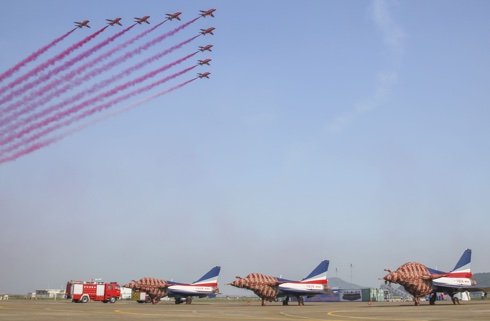
The Royal Air Force Aerobatic Team finished with a spectacular flypast involving all nine jets trailing red smoke, to draw an end to its six-day appearance at Airshow China in Zhuhai on 5 November. The displays at the event have made history, being the first time the Red Arrows have visited China and taking the number of countries in which the squadron has performed to 57 since 1965.
Squadron Leader David Montenegro, Team Leader and Red 1, said: ‘The team has flown nine public displays in China, in six days. In my time as Team Leader that is a first. China has offered a beautiful display site at Zhuhai. To fly those displays back-to-back has been a real pleasure. Every single day the weather has been great.’
The visit to China forms part of a major, 60-day tour to the Asia-Pacific and Middle East regions by the Red Arrows. It is the team’s largest overseas tour in almost a decade and is aimed at supporting and promoting UK interests across defence, industry, trade and education.
Automated Ships Ltd and Kongsberg MoU
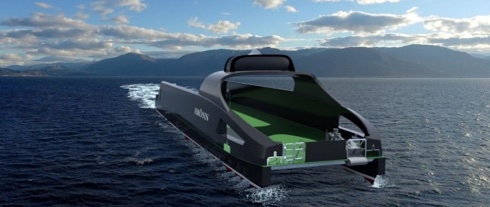
On 1 November Kongsberg of Norway announced that it had signed a Memorandum of Understanding with the UK’s Automated Ships Ltd to build the world’s first unmanned and fully-automated vessel for offshore operations. It is understood that in January 2017, Automated Ships Ltd will contract the vessel Hrönn, which will be designed and built in Norway in cooperation with Kongsberg.
Sea trials will take place in Norway’s newly designated automated vessel test bed in Trondheim fjord and will be conducted under the auspices of DNV GL and the Norwegian Maritime Authority (NMA). Hrönn will ultimately be classed and flagged, respectively it is reported.
Furthermore, Kongsberg will deliver all major marine equipment necessary for the design, construction and operation of Hrönn. This will include systems for dynamic positioning and navigation, satellite and position reference, marine automation and communication. All the vessel’s control systems including dynamic positioning, automation and ECDIS will be replicated at an Onshore Control Centre, allowing full remote operations of Hrönn.
UNCTAD News No. 71
The United Nations Conference on Trade and Development (UNCTAD) has issued its Third Quarter 2016 Transport & Trade Facilitation newsletter. This 25-page document contains the usual wealth of sound information on trade and logistics. Africa is particularly well served with pages on activities in Nigeria, Ghana, Sudan, Liberia, Rwanda and elsewhere.
Of particular interest is a one page piece on seaborne trade in 2015 where it is reported that for the first time in UNCTAD’s record world seaborne trade exceeded 10 billion tons. Another article outlines the underlying causes for the demise of Hanjin Shipping following its recent insolvency.
RAF and JASDF first joint exercise
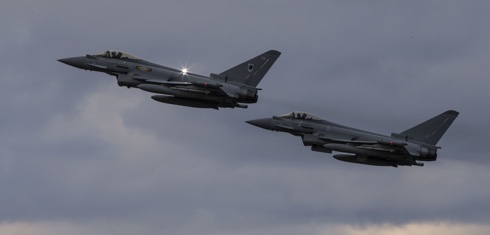
The Royal Air Force and Kōkū Jieitai (the Japan Air Self-Defense Force) have marked the first joint exercise between the two countries with a ceremony attended by Service Chiefs and Government Ministers during the first week of November. Defense Minister Tomomi Inada joined Air Chief Marshal Sir Stephen Hillier and his Kōkū Jieitai counterpart, General Yoshiyuki Sugiyama, to congratulate members of both forces on their performance during Exercise Guardian North 16. While the pilots of both forces have carried out complex air intercept training sorties, the engineers and support staff have worked closely with their JASDF counterparts to further develop relationships and capabilities.
General Sugiyama: ‘We have not done any bilateral exercises in Japan with other nations except with the US, and ultimately we are so grateful for this opportunity to host one in Japan with the Royal Air Force; which is one of the most committed services to improving the global security environment.’
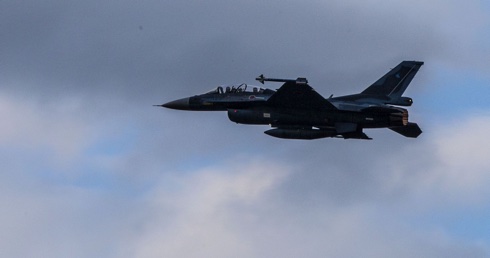
John Pottle to become fifth RIN Director
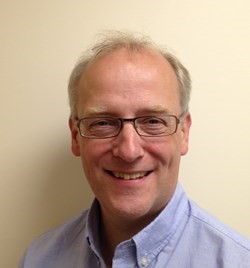
On 23 October the London-based Royal Institute of Navigation (RIN) announced that John Pottle will be joining the staff as its fifth Director.
Current Director Captain Peter Chapman-Andrews will be handing over the reins to John Pottle on 1 January, 2017.
John joins the RIN from Spirent Communications plc where he has served as Marketing Director of the Positioning Technology business unit since 2003. Spirent is best known for its leading portfolio of GPS/GNSS simulators and helps technology developers improve the performance and resiliency of their positioning, timing and navigation systems.
New CEO for the Nautical Instititute

The Nautical Institute announced on 31 October that it had selected a new Chief Executive Officer after interviewing a competitive shortlist of six candidates. Captain John Lloyd MBA AFNI, currently the Institute’s Chief Operating Officer, will take over from Philip Wake OBE RD* MSc FNI, who is retiring in May 2017 after 14 years in post.
John took up the COO post in November 2015 in which he has had overall responsibility for the Institute’s specialised training services, including the industry-standard Dynamic Positioning Operator (DPO) accreditation and certification scheme.
EfficienSea2 – just time to register
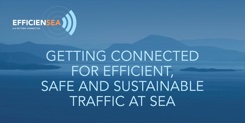
With a couple of days left to register, the organisers of EfficienSea2 have now published the final programme for the EfficienSea2 conference to be held in Frederiksberg, Copenhagen, Denmark from 8-9 November 2016 with the theme: Getting connected to the future.
This event will provide the first opportunity for delegates to experience what steps EfficienSea2 has taken towards connecting with the future of maritime communication. Beta versions of the Maritime Cloud and BalticWeb will be demonstrated, and all participants will get a chance to engage with the 32 partners in the project.
Best practices for leap second event on December 31
The decision to add a leap second is made by the International Earth Rotation and Reference Systems Service, an international standards body, to accommodate for variations in the Earth’s rotational speed. The US federal government’s Global Positioning System (GPS) broadcasts leap second correction information in the navigation message. However, it is the responsibility of users to assure that their hardware and software recognizes and manages the leap second correctly; errors and equipment failures can occur when GPS receivers and clocks process the leap second signal incorrectly. It is suggested that readers ensure all software and firmware is up to date.
This document is intended to assist federal, state, local, and private sector organizations with preparations for the Saturday, 31 December 2016 Leap Second event. The document is sponsored by the Department of Homeland Security’s National Cybersecurity and Communications Integration Center in coordination with the United States Naval Observatory, National Institute of Standards and Technology, the USCG Navigation Center, and the National Coordination Office for Space-Based Positioning, Navigation and Timing.
Antarctica’s Ross Sea Marine Protected Area (MPA)
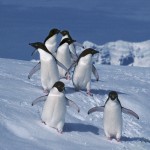
It was reported by the Cambridge-based British Antarctic Survey (BAS) that the world’s experts on Antarctic marine conservation had in week ended 29 October agreed to establish a marine protected area (MPA) in Antarctica’s Ross Sea.
At the meeting of the Commission for the Conservation of Antarctic Marine Living Resources (CCAMLR), all Member countries agreed to a joint USA/New Zealand proposal to establish a 1.55 million km2 area of the Ross Sea with special protection from human activities. This area of ocean is equivalent in size to the UK and France combined.
This new MPA, due to come into force in December 2017, will limit, or entirely prohibit, certain activities in order to meet specific conservation, habitat protection, ecosystem monitoring and fisheries management objectives. It is understood that 72% of the MPA will be a no-take zone, which forbids all fishing, while other sections will permit some harvesting of fish and krill for scientific research.
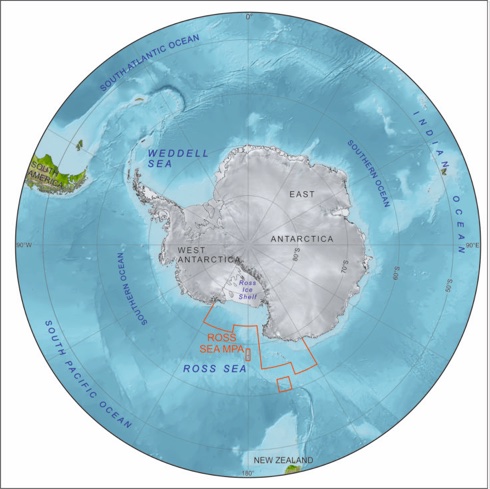
David Page FRIN (1929-2016) †

It is with great sadness that we report that David Page FRIN has died at the age of 86.
David was unique in that he had been a professional navigator both at sea and in the air, as a Master Mariner, holder of Pilot and Flight Navigator licences and authorised Navigator Flight Test Examiner.
At the age of 16 he joined the Merchant Navy and the Royal Naval Reserve, ultimately becoming a Master Mariner.
In 1957, however, he moved to the air by joining Air Charter Ltd, British United Airways and then British Caledonian as a flight navigator, becoming the latter’s Chief Navigator. For over 30 years he oversaw the practical navigation of fleets of aircraft ranging from the piston-engined Avro Tudor and Douglas DC-4 to the Airbus A-320 and Boeing B-747. His responsibilities included route planning and proving, specifying performance, aircraft evaluation and the introduction of computers.
This involved the introduction of navigation aids such as Loran-C, Decca, Dectra, doppler, Omega, inertial systems, satnav, area-nav, performance management and the adoption of CAT III landing operations.
Make Heathrow decision a ‘win-win’ says Cilt
The Government’s decision to support the provision of an additional runway at Heathrow should be made into a ‘win-win’ situation for all parties, claims The (UK-based) Chartered Institute of Logistics and Transport (CILT) after the Ministerial announcement on 25 October.
Paul Le Blond, Chair, Aviation Policy Group, CILT commented: ‘The end to uncertainty over airports policy is welcomed by logistics and transport professionals, whichever option they supported, but there can be benefits for all parties, who can now take action to ensure that the decision is implemented in the best possible way for all.’
‘Logistics and transport operators, from airlines to freight companies, should use the opportunities that this decision will bring to plan long-term investments in more sustainable infrastructure, equipment and working practices, in order to create a lower carbon footprint and to meet air quality standards.’
‘Communities around the airport should seize the opportunities created for employment and for supplying the expanding airport, not just immediately, but over a long-term period, through education, training and entrepreneurship.’
Transcom applauds decision for new runway
Following the Ministerial statement of 25 October on a new runway at London’s Heathrow Airport, the Chair of TRANSCOM, the House of Commons (Lower House) Transport Committee, Louise Ellman MP, commented: ‘After decades of dithering, the decision has been made and it is the right one. The Transport Select Committee has consistently backed the building of a third runway at Heathrow airport, with the package of accompanying measures recommended by the Airports Commission, as the best solution to increasing airport capacity in the south east.’
‘A third runway at Heathrow is good for business, good for Britain. It is better for connectivity with the UK’s regional airports. This decision will boost business, create training opportunities and new jobs and open the UK to new markets. While the UK gets to grips with Brexit, Heathrow’s established status is already recognised at regional, national and international levels.
UK Government to support new runway at Heathrow
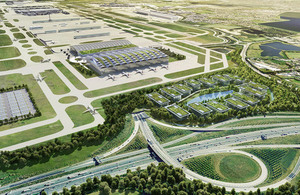
On 25 October in a major boost for the UK economy the government
announced its support for a new runway at Heathrow – the first full length
runway in the south-east of the country since the Second World War.
The scheme will now be taken forward in the form of a draft National Policy
Statement (NPS) for consultation, it is understood.
The government’s decision on its preferred location, which will be consulted on
in the New Year, underlines its commitment to keeping the UK open for
business now and in the future and as a hub for tourism and trade.
Red Arrows arrive in China
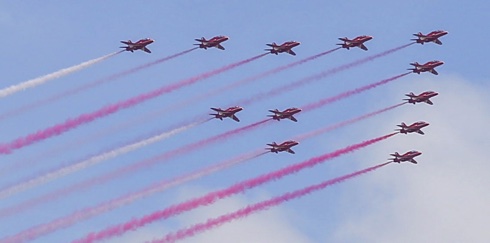
On 22 October the British Embassy in Beijing announced the arrival in China of the Royal Air Force Aerobatic Team, the Red Arrows, as part of their Asia-Pacific and Middle East Tour 2016. With a spectacular new routine and the largest overseas deployment for a decade, the Red Arrows are set to entertain audiences at their first ever display at Airshow China in Zhuhai.
Representing the speed, agility and precision of the Royal Air Force, the team is made up of pilots, engineers and essential support staff. Flying British-built Hawk fast-jets, the Red Arrows are a world leading aerobatic display team and have completed more than 4,800 performances since 1965. Innovation and the team’s constant pursuit of excellence are integral to its success. Performing in China will take the number of countries in which the Red Arrows have displayed to 57 across the globe.

RAF Typhoons arrive in Japan
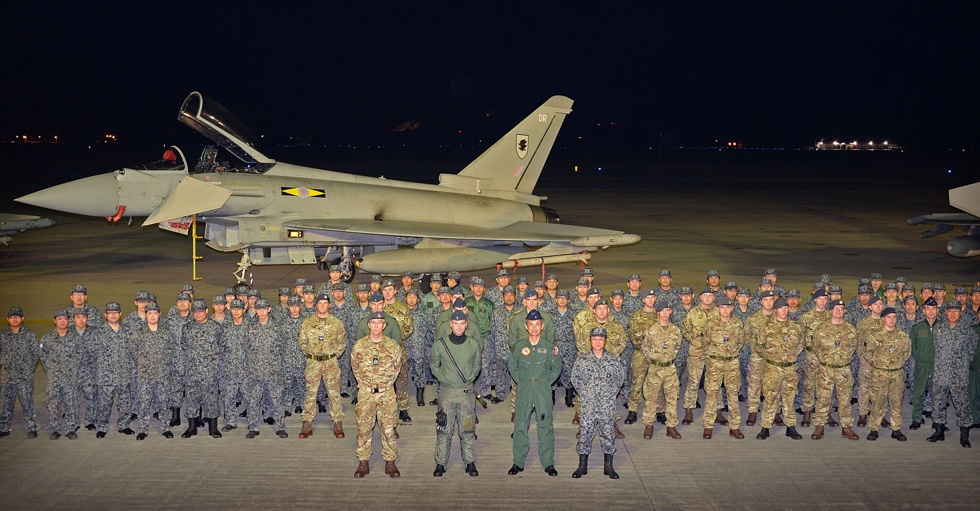
Four Typhoon fighter aircraft, flown by No 2 (AC) Squadron pilots from RAF Lossiemouth, Scotland, arrived at Japan Air Self Defense Force (JASDF) Misawa Air Base, in the northern part of the island of Honsh? on 22 October. An RAF Voyager from RAF Brize Norton, England, crewed by No 10 and 101 Squadrons, provided air-to-air refuelling during the non-stop flight from Malaysia.
This marks the first bilateral exercise ever in Japan for the JASDF to host with foreign military other than the US. The Exercise, named GUARDIAN NORTH 16, represents an opportunity for both air forces to learn from each other and develop their skills.
In a formal arrival ceremony (illustrated), Commander of JASDAF Misawa Air Base, Major-General Koji Imaki, greeted the RAF detachment: ‘Welcome to Japan, welcome to Guardian North. We look forward to working side by side with you in this epoch making exercise. Enjoy the long, long history of Northern Japan.’
Innovative technologies sought for aviation security
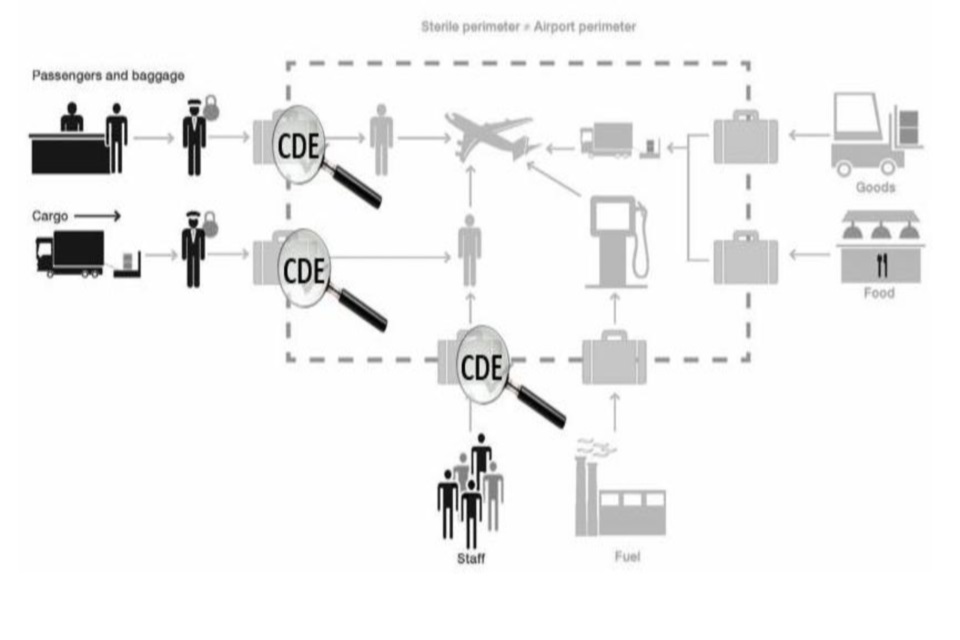
A £2 million competition, to help find new ways to protect air passengers, has been announced by the Government’s Future Aviation Security Solutions (FASS) team.
The joint Home Office and Department for Transport team has launched a competition through the Centre for Defence Enterprise (CDE) as part of its wider FASS programme, worth £25.5million until 2021.
Suppliers are being asked to develop truly innovative technologies, with a focus on people, baggage and cargo security. The technologies and approaches should help detect the widest possible range of explosives, weapons and other threats that could be taken onto an aircraft, while limiting any inconvenience caused to passengers or delays to cargo operations.
Performance Based Navigation (PBN), a shorter path to environmental savings

On 18 October EUROCONTROL announced that PBN-based procedures support more flexible route placement and take advantage of precise trackkeeping capabilities on board modern aircraft. In addition to the safety benefits associated with advanced navigation, PBN creates shorter flight paths and provides the opportunity to avoid populated areas.
This is also beneficial to the environment, as introducing multiple PBN arrival routes can serve to disperse noise emissions across a wider area, while steeper approaches and increased climb gradient could also help to reduce greenhouse emissions.
UK and France begin build of unmanned mine clearance craft

On 20 October in Paris, the UK Minister for Defence Procurement Harriett Baldwin and her French counterpart, Laurent Collet-Billon, launched the next phase of a £117 million joint Maritime Mine Counter Measures (MMCM) programme.
Working with French allies, the MMCM programme will develop advanced maritime mine warfare capability: a capability which will keep the UK and France at the forefront of autonomous systems technology. This development and deployment of unmanned mine clearance vehicle will help keep personnel safe in challenging maritime environments.
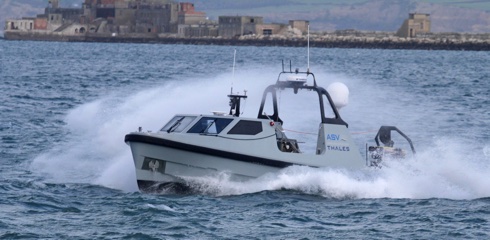
EfficienSea2 is demonstrating major milestones

EfficienSea 2 is an EU Funded Horizon 2020 Project, led by the Danish Maritime Authority, with 32 partners and a budget of €11m. It runs from May 2015 – April 2018.
The EfficienSea2 mid-term conference “Getting Connected to the Future” takes place on 8-9 November 2016, in Copenhagen.
Technology and smart concepts are rapidly evolving within the field of maritime navigation, communication and administration. The conference will address the following questions:
– Will The Maritime Cloud solve identity management and foster Big Data at sea?
– With the alpha release of the regional e-Navigation pilot, the BalticWeb platform, can the Baltic Sea become a role model for global roll out of e-Navigation?
– How can standardised, navigational and administrative services reduce the risk of accidents, increase efficiency and create incentives to comply with emission regulations?
Readers are invited to visit the project website to get more information.
Resilient PNT Forum VI program
The Royal Institute of Navigation is holding its second International Navigation Conference in Glasgow, from 8-10 November 2016.
The sixth Forum on Resilient Positioning, Navigation and Timing (PNT) will be held from 1600-1745 on 7 November 2016, immediately preceding the International Navigation Conference in the same venue.
There is no charge for this event, but those wishing to attend are invited to register their interest with the organisers. For those attending the conference, registration for this meeting is included in the conference registration process, otherwise follow this direct link
RAF Red Arrows perform flypast over Singapore
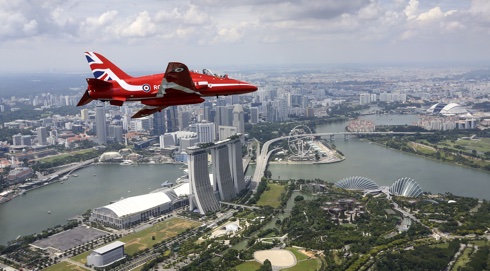
Jets from the Royal Air Force Aerobatic Team, the Red Arrows, carried out a spectacular flypast over Singapore on 18 October. The Red Arrows flew over a stunning backdrop in the Lion City, including Marina Bay Sands and Gardens by the Bay.
Performance by the world-renowned display team was part of a 60-day tour of the Asia-Pacific and Middle East regions, supporting UK interests and raising awareness of British innovation, industry and engineering excellence.
Bulgarian Naval Academy acquires VSTEP simulators
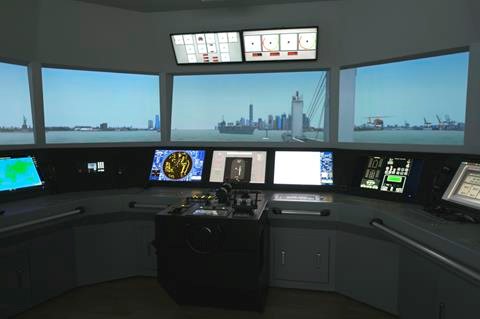
Nikola Vaptsarov Naval Academy (NVNA) in Varna, Bulgaria, has opened a new simulation centre, the Centre for Integrated Management and Monitoring of the Coastal Zone, and has contracted the Dutch company, VSTEP, for the supply and delivery of several NAUTIS simulators.
Apart from the simulators, VSTEP also developed an innovative tool called Live Data Module (LDM) to visualise the movements of ships in real time taken from AIS or incidents encountered such as oil spill, man overboard (MOB) or weather sensor-delivered information provided to the simulator. With this tool, operators can appreciate bridge activities with realistic port and coastal 3D modelling. This virtual bridge view in the simulator can assist VTS operators to better assist ships approaching the port, or ships that may be standing into danger or on a collision course.
Pjotr van Schothorst, CEO of VSTEP commented: ‘It was a delight to see this brand new high-tech simulation centre with some of our latest products inside the beautiful old building of the Naval Academy of Varna.’

